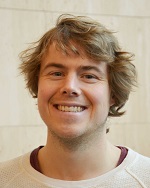The public defence will be held as a video conference over Zoom.
The defence will follow regular procedure as far as possible, hence it will be open to the public and the audience can ask ex auditorio questions when invited to do so.
Click here to participate in the digital public defence
Digital Trial Lecture – time and place
Adjudication committee
- First opponent: Principal Investigator Dori Derdikman, Technion – Israel Institute of Technology
- Second opponent: Sir Henry Dale Fellow, Associate Professor Tim Vogels, University of Oxford
- Third member and chair of the evaluation committee: Associate Professor Ragnhild Eskeland, University of Oslo
Chair of the Defence
Associate Professor Kjetil Røysland, University of oslo
Principal Supervisor
Associate Professor Torkel Hafting, University of Oslo
Summary
The sense of space is important for movement and the formation of memories. Grid cells in the entorhinal cortex are believed to be key components for spatial reasoning. Established theory suggests that brain waves in the theta frequency and stable connectivity are essential for the hexagonal activity pattern of grid cells. Lepperød and colleagues have used computational models and experiments to assess how the pattern of grid cells emerge, and how their activity remains stable across time and space.
Using optogenetics to control oscillatory activity in inhibitory cells in the medial septal area, he found that pacing brain waves at different frequencies vanished theta oscillations, while the spatial pattern of grid cells remained stable. Results strongly indicate that spatial and temporal activity of grid cells can be dissociated and that oscillatory activity of grid cells is unlikely to cause their remarkable hexagonal activity pattern.
Grid cells show exceptional stability and Lepperød proposed that an extracellular matrix called perineuronal nets stabilize connectivity among grid cells by regulating synaptic plasticity. Breaking down these nets by injecting a bacterial enzyme known as Chondroitinase ABC led to destabilized grid cell patterns in novel environments and reduced pairwise correlations. Results suggest that perineuronal nets support the stable activity of grid cells.
The work indicates further that grid cells emerge due to connectivity, but this remains unresolved. Using spiking activity to infer connectivity is difficult and naive inference may reflect spurious correlations when neurons get common input. To avoid this problem, Lepperød used the instrumental variable technique, commonly used in econometrics. Combining recording of neurons together with optogenetics the method allows inference of causal interactions between neurons. The method shows promising results in simulations where it remains causally valid while naive methods fail.
Additional information
Contact the research support staff.
